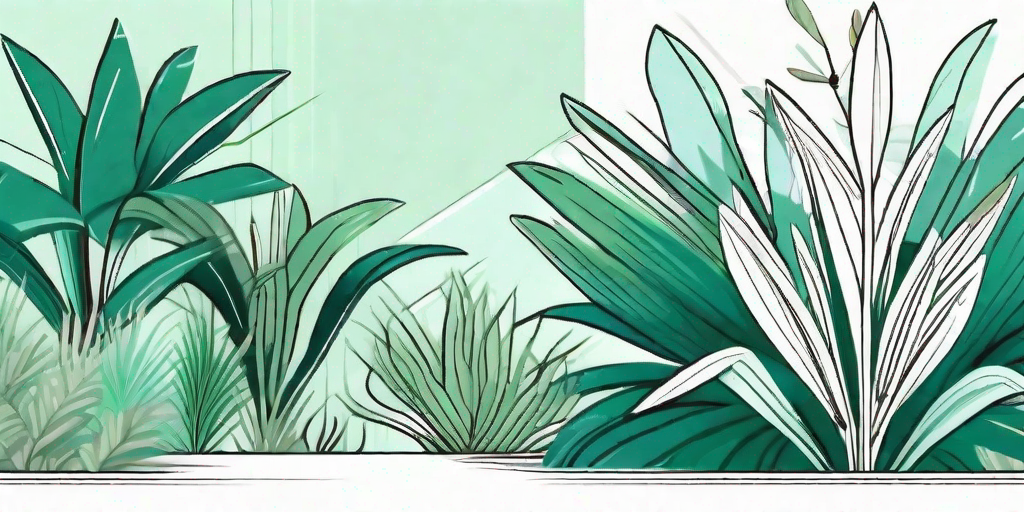
Welcome to the world of gardening, where getting your hands dirty is a sign of a job well done and the scent of fresh soil is as intoxicating as a fine wine. Today, we're going to dive into the wild and wonderful world of the Madagascar plant, a botanical beauty that's as exotic as its name suggests.
What is a Madagascar Plant?
Before we dive into the nitty-gritty of how to care for a Madagascar plant, let's take a moment to appreciate its unique charm. The Madagascar plant, also known as the Madagascar Periwinkle or Catharanthus roseus, is a vibrant, flowering plant native to, you guessed it, Madagascar.
With its glossy leaves and star-shaped flowers, it's a sight to behold in any garden. But don't let its delicate appearance fool you. This plant is as hardy as they come, making it a favorite among both novice and experienced gardeners alike.
The History of the Madagascar Plant
Legend has it that the Madagascar plant made its way from the exotic landscapes of Madagascar to the rest of the world through the hands of adventurous botanists. These plant-loving explorers were so enamored by its beauty and resilience that they couldn't resist bringing it back home.
Today, the Madagascar plant is a common sight in gardens around the world, bringing a touch of tropical charm to even the most mundane landscapes.
How to Grow a Madagascar Plant
Now that we've covered the basics, let's get down to business. Growing a Madagascar plant may seem like a daunting task, but fear not, dear reader. With a bit of patience and the right know-how, you'll have a thriving Madagascar plant in no time.
Choosing the Right Spot
The first step in growing a Madagascar plant is choosing the right spot. These plants love the sun, so pick a spot in your garden that gets plenty of light. But be careful, while they love the sun, they don't appreciate extreme heat. So, if you live in a particularly hot climate, consider a spot that gets some afternoon shade.
As for the soil, Madagascar plants aren't too picky. They can tolerate a wide range of soil types, as long as it's well-draining. So, avoid spots where water tends to pool after a rainstorm.
Planting and Watering
Once you've chosen the perfect spot, it's time to get planting. Dig a hole that's about twice the size of the root ball, place the plant in the hole, and fill it in with soil. Give it a good watering, but don't overdo it. These plants are drought-tolerant and don't appreciate soggy roots.
After the initial watering, you can let Mother Nature take over. Only water the plant if the top inch of soil feels dry to the touch. In the winter months, you can cut back on watering even more.
Caring for Your Madagascar Plant
Now that your Madagascar plant is happily settled in its new home, it's time to think about ongoing care. Thankfully, these plants are relatively low-maintenance, making them a great choice for busy gardeners.
Pruning and Fertilizing
Madagascar plants benefit from regular pruning to keep them looking their best. Prune back any dead or dying branches to encourage new growth. You can also prune to shape the plant, but be careful not to overdo it. These plants have a natural, bushy shape that adds to their charm.
As for fertilizing, a slow-release, balanced fertilizer applied in the spring should do the trick. Just be sure to follow the package instructions to avoid over-fertilizing.
Dealing with Pests and Diseases
While Madagascar plants are generally pest-resistant, they can sometimes fall victim to common garden pests like aphids and spider mites. If you notice any signs of pest infestation, such as yellowing leaves or a sticky residue on the leaves, treat the plant with an insecticidal soap or neem oil.
As for diseases, Madagascar plants are susceptible to root rot if overwatered. So, remember to let the soil dry out between waterings to keep your plant healthy and happy.
FAQs
- Can I grow a Madagascar plant indoors?
Absolutely! Just make sure to place it in a spot that gets plenty of light, but not direct sunlight, as this can scorch the leaves. - Are Madagascar plants toxic to pets?
Yes, Madagascar plants are toxic to pets if ingested. So, if you have curious pets, it's best to keep this plant out of their reach. - How often should I water my Madagascar plant?
Water your Madagascar plant only when the top inch of soil feels dry to the touch. In the winter months, you can cut back on watering even more.
There you have it, folks! A comprehensive guide to unleashing the beauty of the Madagascar plant. So, what are you waiting for? Grab your gardening gloves and get planting!















